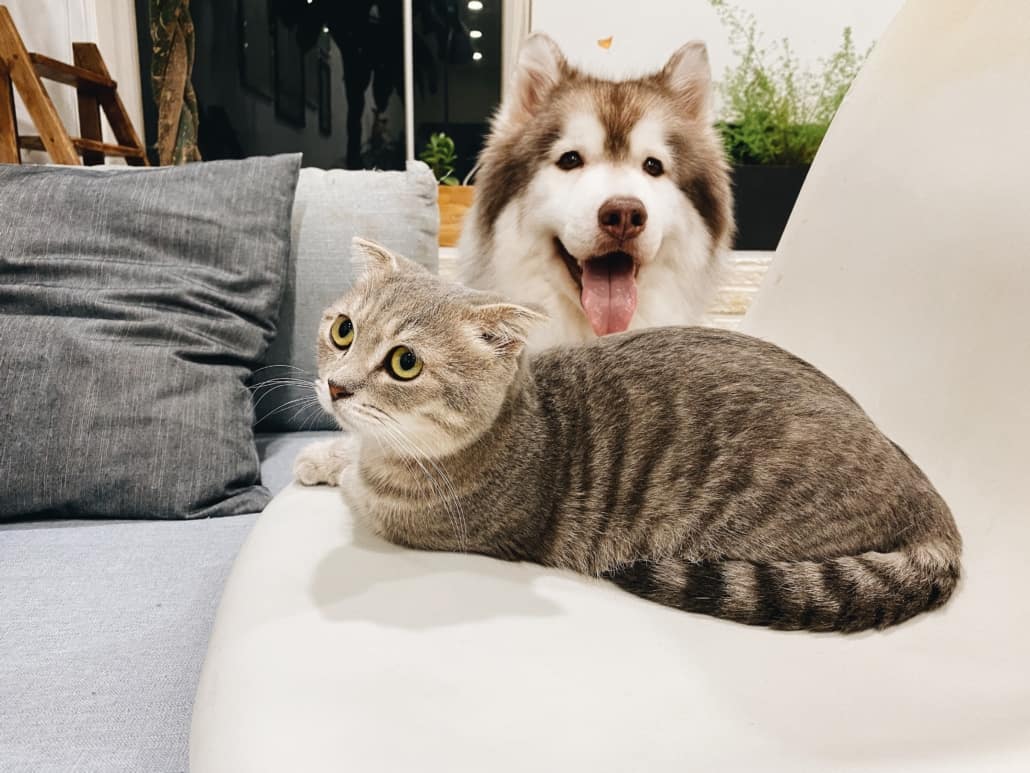|
Getting your Trinity Audio player ready...
|
Equally Important for Advisors and for Families
Working with enterprising families as I do, I find myself interacting with individuals as well as with groups of people.
Early on in these relationships, it’s always interesting to try to ascertain who’ll get along well with the other members of the family when we’re all together.
While compatibility in working together is never enough to guarantee success, (see Sibling Compatibility Is Not Sufficient) it sure is helpful and preferable to situations where folks don’t get along.
When working with other professionals as part of a multi-disciplinary team of advisors, the ability to work well together is also paramount.
We’ll look at both of these subjects this week.
Examples from Plants and Pets
Regular readers know that my inspirations for these posts are varied, and this week is no exception.
If you’ve been on a Zoom call with me from my office recently, you may have noticed a couple of new plants that I added to my background.
As I researched this purchase of greenery, I learned that some plants are marketed as “safe for pets”, which wasn’t something I had ever even thought about before.
I’ve been a dog and cat owner for many years, and we have several plants around our house, and this just never came up for us.
But I guess for some people, having plants that won’t poison their best friends is something that they need to worry about.
It seems that some plants are not compatible with pets.
Fighting Like Cats and Dogs
The dogs and cats we’ve had over the decades have, thankfully, also co-existed quite well, as those in the photos I found to accompany this post seemingly do.
The old saying about “fighting like cats and dogs” certainly has some merit, but again, it’s not universal, just like having plants and pets sharing space isn’t necessarily dangerous for either.
Since we’ve been without a dog for a few years now, I occasionally check out some websites for rescue dogs in our area.
See: Honouring FamBiz System Exits
I don’t recall ever noticing so many of the descriptions that mention restrictions like “not good with children”, “not good with cats”, and even “not good with other dogs”.
Then again, there’s a reason why these dogs are once again looking for a home.
But note that compatibility is something to consider, because if you don’t, then there’s a high likelihood of future regret.
Family Members Working Together
This “high likelihood of future regret” is something that gets overlooked in continuity planning for families.
Too often, parents make ill-considered decisions about who will own what after they die, and siblings end up being partners, even though it was always clear that they were less than ideally compatible.
When I work with families I always try to make sure that we try to ascertain this compatibility question early on.
If it’s already clear that the rising generation would be heading for a future clash down the road, why not look for alternative ways to structure things to minimize this risk?
My default is that family harmony should not be sacrificed for the sake of the business or the family wealth.
Multi-Disciplinary Teams for Interdisciplinary Work
When someone is part of the family, it’s not easy to “just get rid of them”, and that’s what makes this work so interesting.
When it comes to working with other professionals in service of a family, though, there is, thankfully, much more flexibility.
Of course when these advisors all work for the same organization, they may still get stuck in some less-than-perfectly-compatible situations.
But by and large, it’s much more possible to invoke a personal “No A-Holes Rule” as I’ve tried to do. This is one of the benefits of my independent status.
Putting Together a Project Team
The Family Enterprise Advisor program I completed 10 years ago (where I had my calling) includes a project phase where all enrollees are put into interdisciplinary teams to work together with a real family.
This capstone assignment, coming under the heading of Knowledge Integration and Application, is the biggest benefit to that program.
I was able to invite myself to see some of the group presentations of the latest cohort recently, and was reminded of how important that project is in providing participants the “real life” opportunity to live this compatibility experiment.
I imagine that some teammates will work together again, and others won’t!






